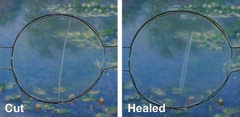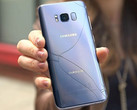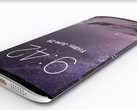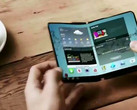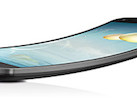Smartphones have ushered in the age of high-powered mobile computing on beautifully designed devices, but one of their biggest weaknesses is their fragility. Drop your smartphone and the touchscreen will likely break. Put your phone in your pocket with keys and the touchscreen might get scratched. Sneeze too hard and your phone’s touchscreen may irreparably shatter. There may be some relief coming soon, though. Researchers at the University of California have developed a new conductive polymer that is incredibly durable and capable of healing itself.
Led by Dr. Chao Wang, a professor of polymer chemistry at the University of California Riverside, researchers have created a new “network of poly(dimethylsiloxane) polymer chains crosslinked by coordination complexes that combines high stretchability, high dielectric strength, autonomous self-healing and mechanical actuation [sic].” In layman’s terms, this is a stretchy new material that can conduct electrical signal and heal itself after it’s cut or torn apart. In testing, Dr. Wang tore the material in half. The material then stitched itself back together in about 24 hours.
The material operates on the chemical phenomena of molecular attraction. Thanks to an ion-dipole interaction, the charged ions that make up the polymer will attract back together over a relatively short period of time. We’ve seen something similar in phones like LG’s G Flex, which featured a back case that could self-heal from minor scratches. This new material is special in that it can conduct electricity. This makes it suitable for use in the capacitive touchscreens found in modern smartphones.
It could also be cheaper to manufacture than sapphire displays like those found on the Kyocera Brigadier. Sapphire crystal is incredibly tough and durable, sitting right behind diamond on the Mohs hardness scale. But sapphire crystal can be expensive and difficult to manufacture. As such, we haven’t seen it on too many smartphones; sapphire crystal is typically used in high-end wristwatches and lenses. The new polymer could be much easier (and cheaper) to manufacture.
Sounds great, right? Well, the material may not make it onto electronics until 2020. Dr. Wang said: “Self-healing materials may seem far away for real application, but I believe they will come out very soon with cellphones. Within three years, more self-healing products will go to market and change our everyday life. It will make our cellphones achieve much better performance than what they can achieve right now.”




